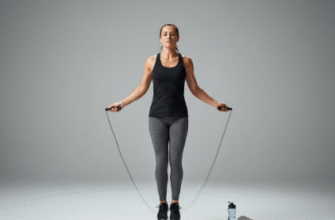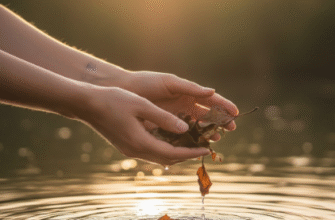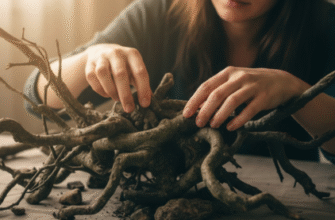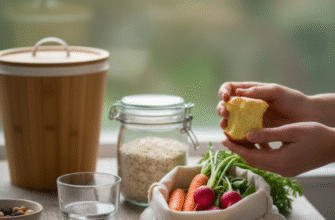Have you heard it? That distinctive
So, What Exactly Is This Pickleball Craze?
Imagine a delightful mashup of tennis, badminton, and table tennis. That gives you a starting point for understanding pickleball. It’s played on a court roughly the size of a doubles badminton court (20×44 feet), significantly smaller than a tennis court. Instead of rackets, players use solid paddles, often made from wood, composite materials, or graphite. And the ball? It’s a plastic sphere with holes, much like a wiffle ball, which travels slower and bounces lower than a tennis ball.
The net is hung at 36 inches on the sidelines and 34 inches in the middle. Most games are played as doubles, though singles is also an option. Scoring might seem a little quirky at first (you only score when your team is serving, and games usually go to 11 points, win by 2), but the basic rules are relatively straightforward and quick to pick up. One key feature is the Non-Volley Zone, affectionately known as the “kitchen,” a seven-foot area on either side of the net where players cannot hit the ball out of the air (volley). This prevents players from simply smashing shots at the net and encourages a more strategic dinking game.
A Gentle Learning Curve
One of the biggest draws of pickleball is its remarkable accessibility. Unlike tennis, which can demand significant time to master powerful serves and groundstrokes, or golf with its intricate swing mechanics, pickleball basics can often be grasped within the first hour of playing. The underhand serve is simple to execute, the smaller court means less ground to cover, and the slower ball allows for longer rallies, even for beginners. This low barrier to entry means you can go from never holding a paddle to having enjoyable exchanges relatively quickly. You don’t need years of lessons to feel competent enough to have fun.
More Than Just a Game: The Social Factor
While the gameplay itself is engaging, a huge part of pickleball’s explosive growth is its inherently social nature. The smaller court puts players in closer proximity, fostering conversation and camaraderie between points. Since doubles is the most common format, you’re constantly interacting with a partner and your opponents. There’s often less intensity and pressure than in traditional tennis matches, leading to a more relaxed and friendly atmosphere.
Walk past any active pickleball courts, and you’ll likely hear as much laughter and friendly chatter as the pop of the ball. Players often rotate partners, making it easy to meet new people. Many communities have sprung up around the sport, with organized drop-in sessions, round robins, leagues, and social events built around playing times. It’s become a fantastic way for people to connect, get some exercise, and enjoy friendly competition simultaneously.
Fitness That Doesn’t Feel Like a Chore
Don’t let the “easy to learn” part fool you – pickleball can be a great workout! While you can certainly enjoy a leisurely game, playing competitively involves quick bursts of movement, agility, balance, and hand-eye coordination. You’re constantly moving side-to-side, forwards and backwards, reacting quickly at the net, and engaging your core. A lively doubles match can easily get your heart rate up and provide a solid cardiovascular workout without the high impact on joints often associated with running or tennis. It’s exercise disguised as fun, making it easier to stick with.
Remember that pickleball courts are often shared community spaces. Always wait for a point to finish before crossing behind a court where a game is in progress. Call the score clearly before serving, and if courts are busy and people are waiting, be welcoming and incorporate waiting players fairly through rotations. Good sportsmanship and court courtesy are key to ensuring everyone has a positive experience.
Ready to Give it a Go? Getting Started is Easy
Feeling the itch to try pickleball? Jumping in is simpler than you might think.
Finding Your Court
Pickleball courts are popping up everywhere. Check your local:
- Parks and Recreation Department websites
- Community Centers or YMCAs
- Dedicated Pickleball Clubs (search online)
- Some Tennis Clubs are converting courts
- Retirement communities often have courts (sometimes open to the public)
Gear Up (Without Breaking the Bank)
You don’t need fancy equipment to start.
- Paddles: Many community centers or clubs have loaner paddles available. If you decide to buy, beginner paddles are very affordable, often found in starter sets that include balls. Don’t feel pressured to buy a high-end graphite paddle right away; a basic wood or composite one is fine for learning.
- Balls: Pickleballs are specific to the sport. There are slightly different versions for indoor and outdoor play (outdoor balls typically have smaller, more numerous holes and are harder). Again, starter sets usually include these.
- Shoes: Good court shoes are recommended. Running shoes can work initially, but court shoes offer better lateral support for the side-to-side movements common in pickleball. Avoid shoes with deep treads that might grip the court too much.
- Attire: Comfortable athletic wear is all you need.
Learning the Ropes
While you can learn by just playing, here are a few ways to speed up the process:
- Beginner Clinics: Many communities offer introductory lessons that cover rules, basic strokes, and strategy. This is often the fastest way to get comfortable.
- Online Videos: YouTube is a treasure trove of pickleball tutorials covering everything from scoring to advanced techniques.
- Play with Experienced Friends: If you know someone who plays, ask them to show you the basics. Most pickleball enthusiasts are eager to share their love for the game!
- Just Show Up: Head to a drop-in session. Introduce yourself as a beginner – you’ll likely find friendly players willing to guide you through your first game.
Why Pickleball is Sticking Around
Pickleball isn’t just a fleeting trend; it has staying power. Its unique combination of being easy to learn but offering depth for mastery, its strong social element, and its suitability for a wide range of ages and fitness levels make it incredibly appealing. It fosters community, encourages activity, and, most importantly, it’s genuinely fun. The satisfying sound of the paddle connecting with the ball, the quick volleys at the net, the strategic placement of dinks – it all adds up to an addictive and enjoyable experience.
So, next time you hear that








